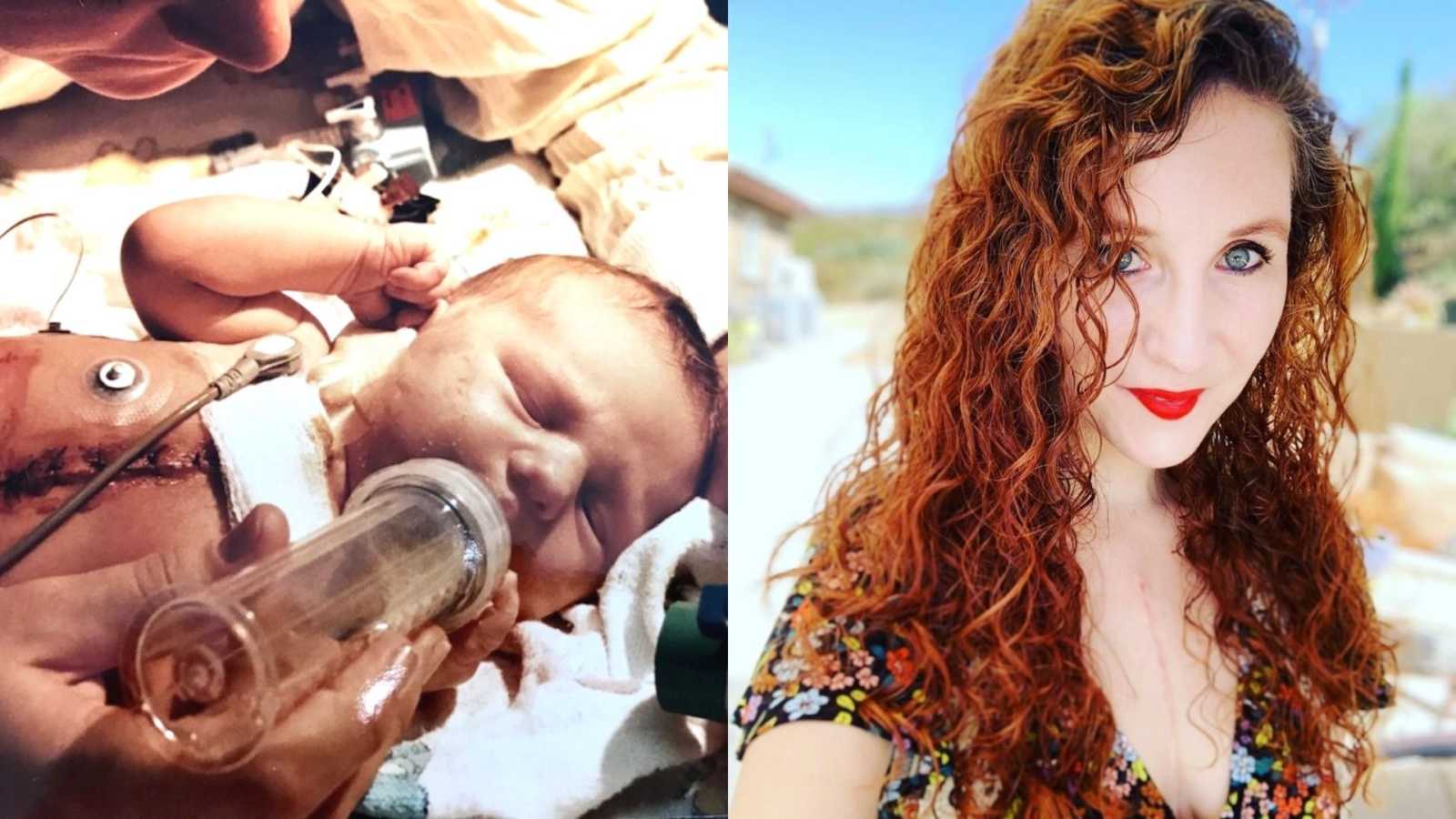“I was born with a Congenital Heart Defect called Transposition of the Great Arteries (TGA), which is when the two main arteries that carry blood are switched. To correct this, I have what’s called a mustard procedure, which basically my heart works backward. I’ve had seven heart surgeries since I was born. I’ve also been recently diagnosed as autistic at 31 and have OCD and PTSD.
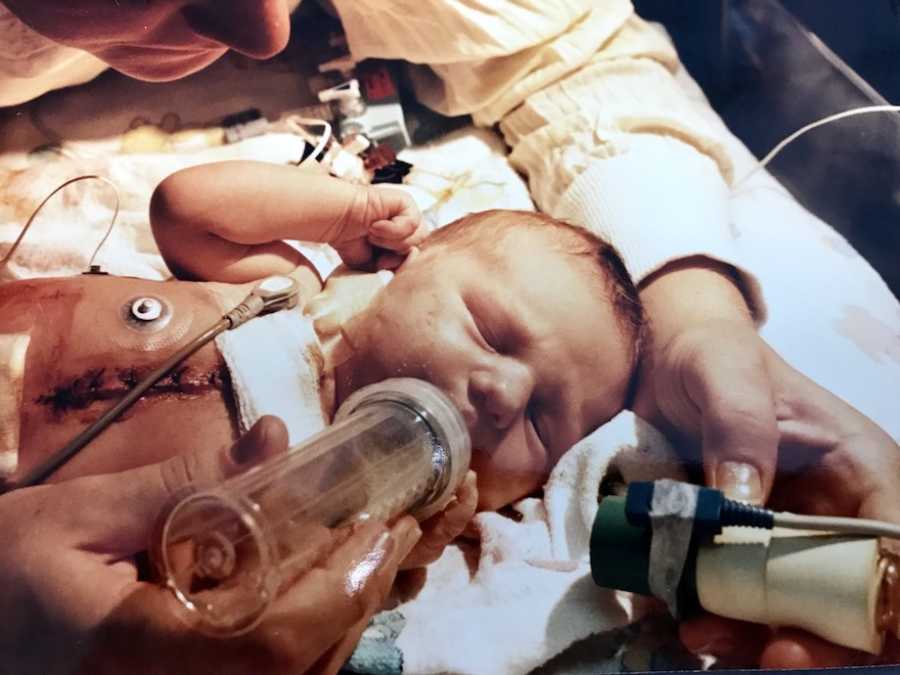
My life has been a rollercoaster when it comes to surgeries. Either I’ve been the person waiting in a long line or I’m on a rollercoaster I didn’t want to be on in the first place. In 2004, when I was in high school, I had a band put on my Pulmonary Artery to help build muscle for a possible arterial switch. I had a lot of trauma during this surgery. Before my band surgery was to be performed, I had an angioplasty to open up my stent that was placed in 1996 and to prepare my heart for my band placement the next day. During this, they had some trouble and I had a lot of bruising in my groin area. The next day, I went in for my open-heart surgery for my PA band.

I didn’t wake until two days after my surgery. I was informed during surgery, they nicked my lung and I had a partial lung collapse. Over the next few days, I had trouble keeping anything down, had a fever, and my hormones were out of balance. I was constantly having hot flashes. I ended up throwing up blood. They were not sure what was wrong and couldn’t attribute it anything except it was possible there was something wrong with my PA band. My father asked them to look at my medication. So, they adjusted my medication and noticed the morphine was causing a lot of my symptoms. It turned out I was having an allergic reaction to morphine. Once I was taken off it, I was able to start keeping food down. The doctors decided my band was a success and my symptoms weren’t attributed to my band placement. After two weeks in the ICU and another couple of days in the hospital, I was able to go home.
A couple of days passed after being home from the hospital and I was having pain in my right leg whenever I walked. When I first noticed it, I thought it wasn’t really anything. I have a previous knee injury on that side and I thought maybe my knee what just causing the pain. I also had bruising on that side from my angioplasty in my groin/leg area. The pain continued to get worse and my parents took me to my doctor who suggested an ultrasound of the bruised area to check for blood clots. When the test came back that I had a blood clot in my leg, I was devastated. They gave us an option for me to return to the hospital or for my dad to administer shots to help breakdown the clot. These shots were to be administered twice a day for two weeks. They were extremely painful. I was prescribed Coumadin for six months. Eventually, the blood clot went away, and I was in the clear.

Once my PA band was placed, there was a debate on what to do after. I felt like my life was in limbo. There was always this limbering question above me. Was I going to have another major heart surgery? When was that going to happen? If putting that band on was supposed to be so simple and yet caused so many complications and was so traumatic for me, what was doing an Arterial Switch to me going to cause? Because of this loss of control of my body, I dealt with a lot of PTSD and OCD. My high school experience is when I was probably at my worst. I developed anorexia and lied to my family and doctors about my eating habits. My mom tried to get me help but I would always convince her I was okay. To my doctors, my heart was always the most concern.

I lived in limbo for fifteen years after my PA band was put on. I had specialist cardiologists come and go. Some of them would say it might be better to do an arterial switch soon since I was still young and developing. Then I would get another cardiologist who would say if I was doing well, then just leave my heart alone.
I still felt like I was constantly waiting in the doctor’s office to get bad news. About a year after I graduated from college, I started working for a nonprofit that works with adults with disabilities. I worked as a job coach for three years, helping clients learn jobs and be successful in the community. During my time with the company, I turned 26 and my mom had to take me off her insurance due to my age. I had to get my own insurance. It took at least the first year of me being on the insurance to me to get and be seen by a specialist cardiologist.

Due to my condition and because the mustard procedure is outdated, I need to be seen by a specialist cardiologist who deals with congenital heart defects. I’m supposed to be seen every six months to every year by my cardiologist. By the time I saw him, I hadn’t seen a cardiologist in a year in a half. I had to drive three hours away to see him in the middle of the city of LA. At that time, I was feeling that something was off. I had already fainted at work and I was starting to feel fatigued. I just couldn’t do the usual activities I was used to. I was told all my tests were normal and I was fine.
Getting normal care even with my primary became harder and harder with my insurance. In the five years I was with the insurance company, I only saw my primary care three times and my cardiologist twice. In the spring of 2016, I fainted again at work. When I called my cardiologist, they suggested I go to urgent care and run tests. When I went to urgent care, they did not give me any specifics as to what was going on with me but told me I was not allowed to work for a week. I left the company shortly after and started working for a school district as a paraeducator. I, unfortunately, could not afford better insurance through the district and had to stay with what I had.

When I was able to try and make an appointment with my cardiologist again, he had moved to a different location. It took me a while to get set up again with him since I wasn’t notified he had moved offices. When I saw him again and complained about my fatigue, he suggested it was time for me to have an arterial switch done. I thought this was strange since this was my second appointment with him. He hadn’t done any tests on me and didn’t really know too much about my situation. He told me to do the surgery, I would have to go to Northern California to have the procedure and would probably be out of work for an exceedingly long time. He then suggested we run some tests firsts. He said I would need an echo and a stress test and depending on what those show, possibly an MRI. The MRI would be performed in LA. I told him I would rather not have to travel that far if I didn’t have to. Plus, I was also on a deductible plan, so there was also a cost factor.
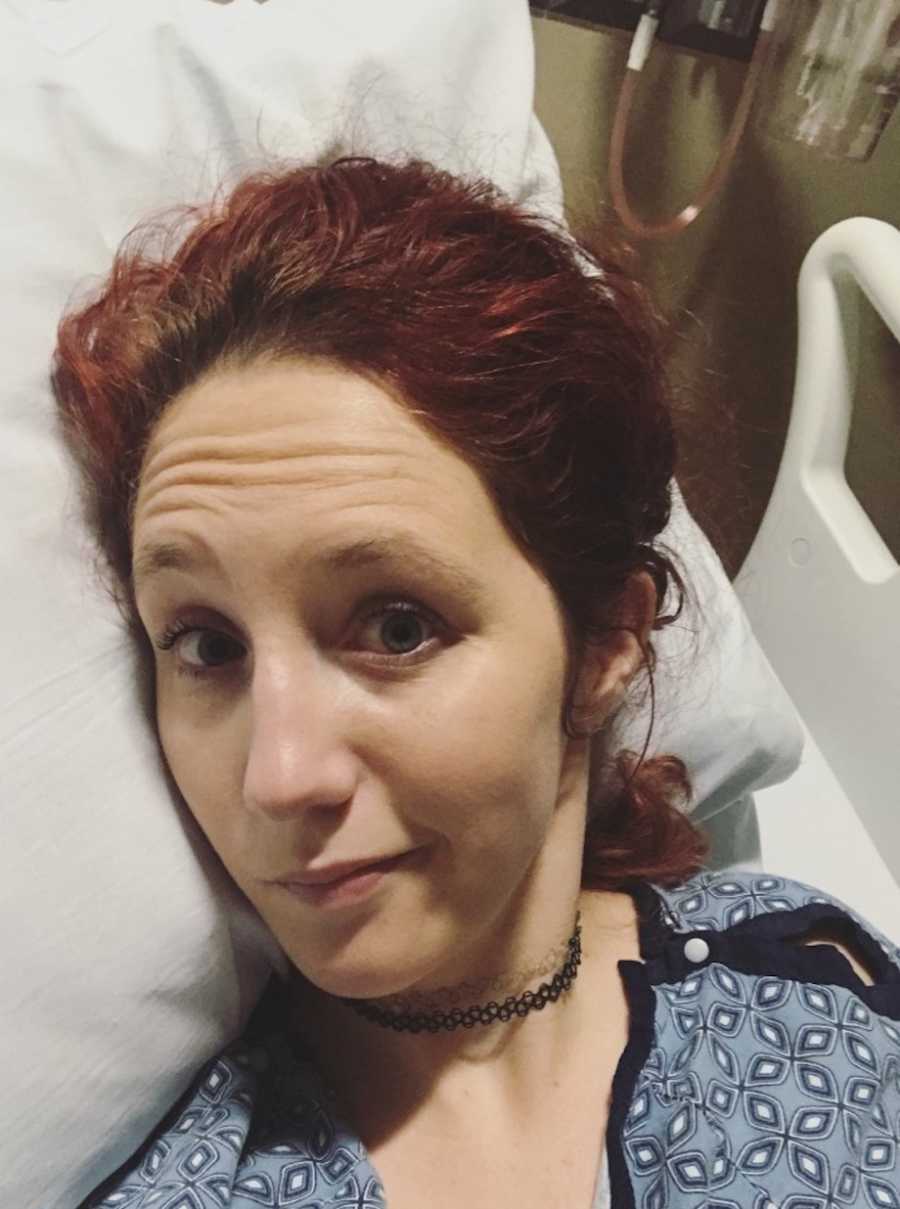
Once I completed the stress test, I waited for my results. After three weeks of not hearing anything, I started to worry. I contacted his office as well as emailed him. I was never able to really speak to anyone working at his office; I always got the general message line. I sent out many emails for about a month, wondering why I hadn’t received the results and asking what I should do. I finally received a message a month later asking me to complete the MRI. I told him I was confused since he knew how far I had to travel and I had already taken too many days off. I couldn’t afford to drive there and take another day off if I didn’t have to. I asked him about the results from my stress test and he said he hadn’t received anything and wasn’t sure why. This went on for three months. I would try to get answers by either phone or email and I wouldn’t receive a reply. I would write long messages that both my father and I would compose together. It wasn’t until the end of the year and the beginning of a new deductible he finally gave me a vague result of my stress test over email saying my heart was abnormal, and I needed an MRI. When I responded it was obvious my heart was abnormal but I didn’t understand what exactly that meant for results, he stated it was better if I saw a different doctor in LA and stopped emailing me.
My family and I tried everything. We tried filing grievances and anything we could to get me proper care but there was always some loophole the insurance would find to get out of it. In July of 2018, I was able to afford to switch insurance. I still had to fight at the beginning to get proper care. I had to jump through hoops to see a specialist and was even assigned a Case Manager through the insurance company.
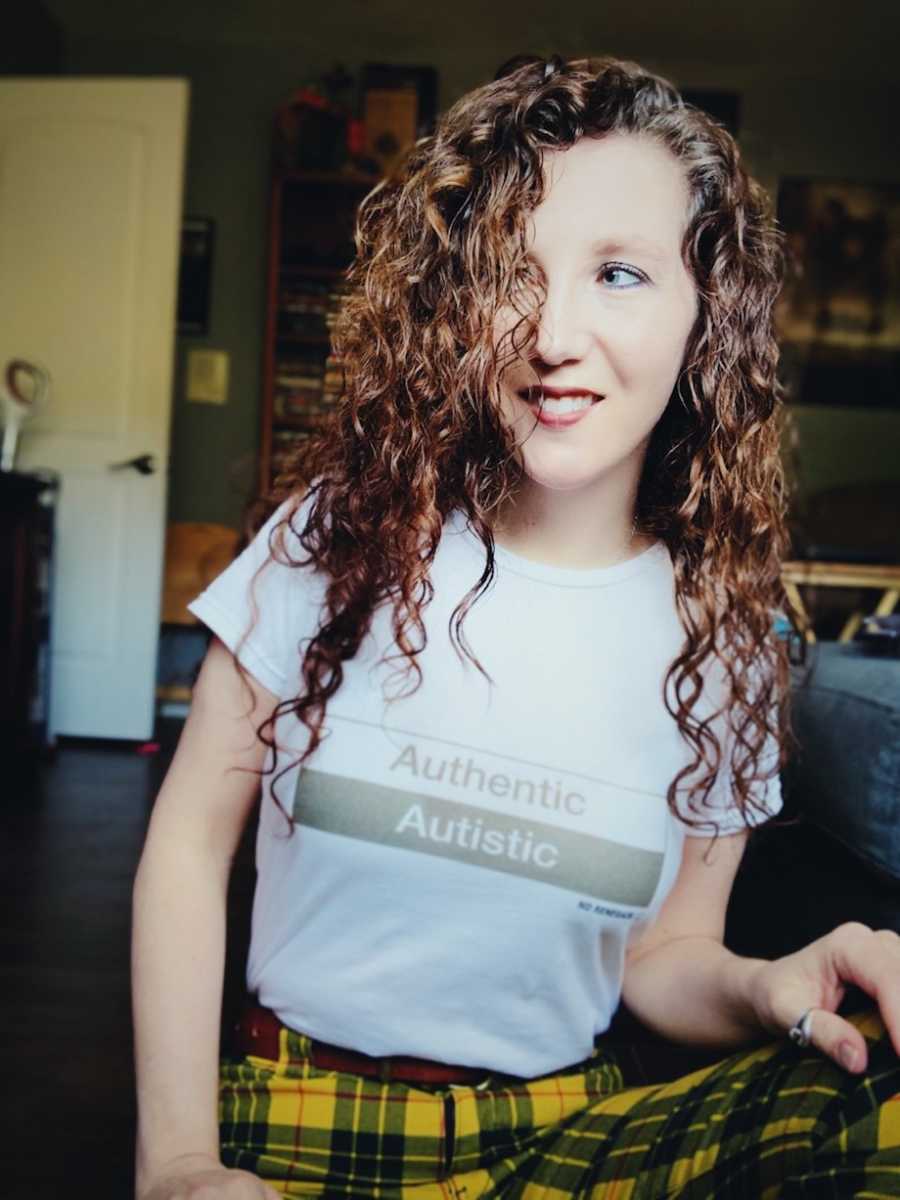
In October of 2018, I ended up in the emergency room complaining of chest pain. The doctors did some tests and weren’t really sure what was causing my problems. My health kept declining. I could barely function at work. I would do a couple of things throughout the day and then spend the rest of it in bed. If I wasn’t at work sitting at a desk with students, then I was at home lying in bed. Something was really wrong with me but no one could tell me what it was. Finally, in January of 2019, I was able to see a specialist adult cardiologist who specializes in adults with congenital defects in San Diego. We discussed switching back my arteries, but he strongly opposed it especially for my age (30). Over the next few months, the doctor ran tests and determined the problem of my severe fatigue was my PA band was too tight and was restricting blood flow to less than a millimeter. The area around the band had also calcified. My band was never meant to stay on that long and was posing an extreme danger to me.
On August 29, 2019, I had my third open-heart surgery to remove my PA band. The doctors and surgeons saved my life. But my family and I also saved my life. If it hadn’t been for my parents, my husband and I constantly advocating and pushing for my health, I wouldn’t be here today. It was a long road of recovery after my surgery, but it’s been good. I was lucky I was only in the hospital for three days. I was off of work for three in a half months but when I returned, I felt better. I felt like I could climb the stairs and not feel winded. I could get through the workday without ended up in bed after. It has almost been a year since my surgery and I’m still recovering but I don’t feel so fatigued anymore. I’m slowly getting back to my normal. I’m excited to get off the rollercoaster and start my life with a bit more stability.
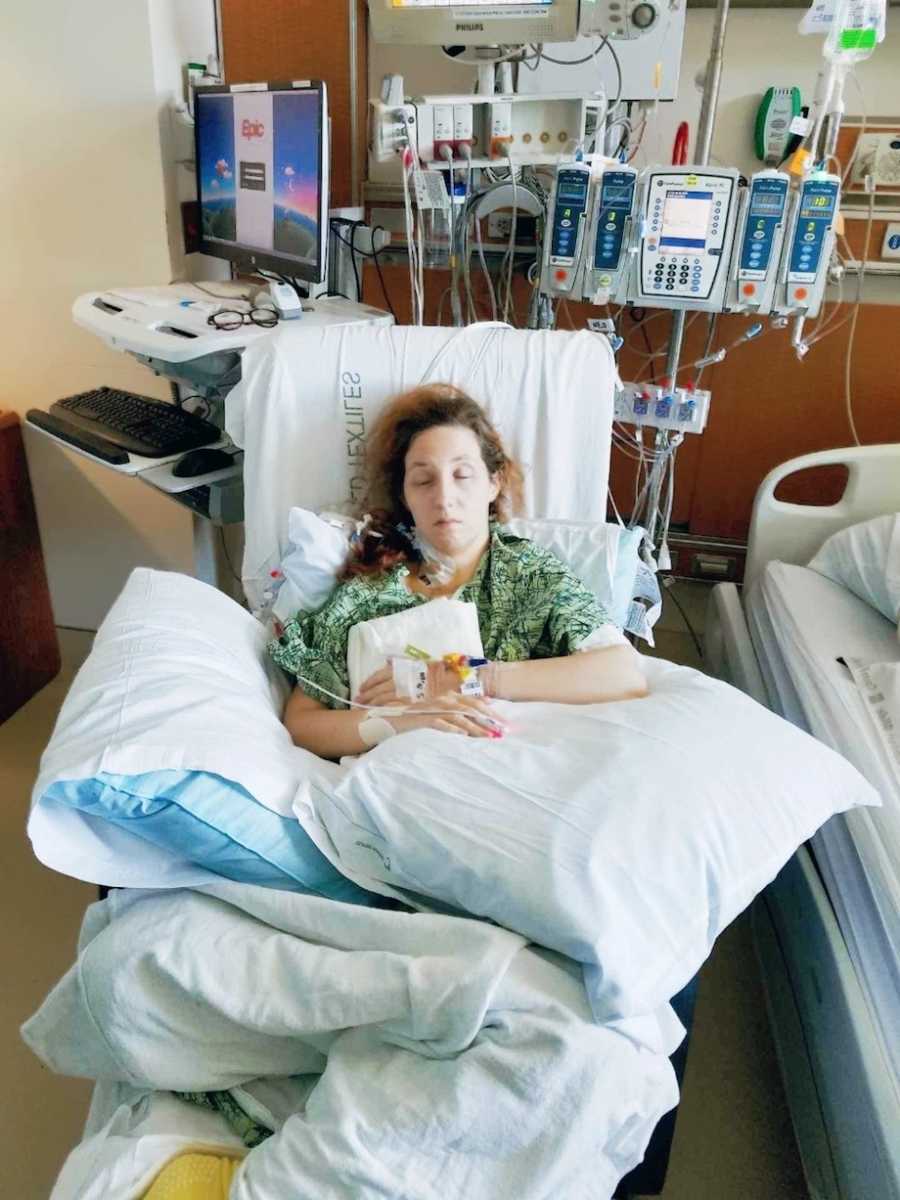

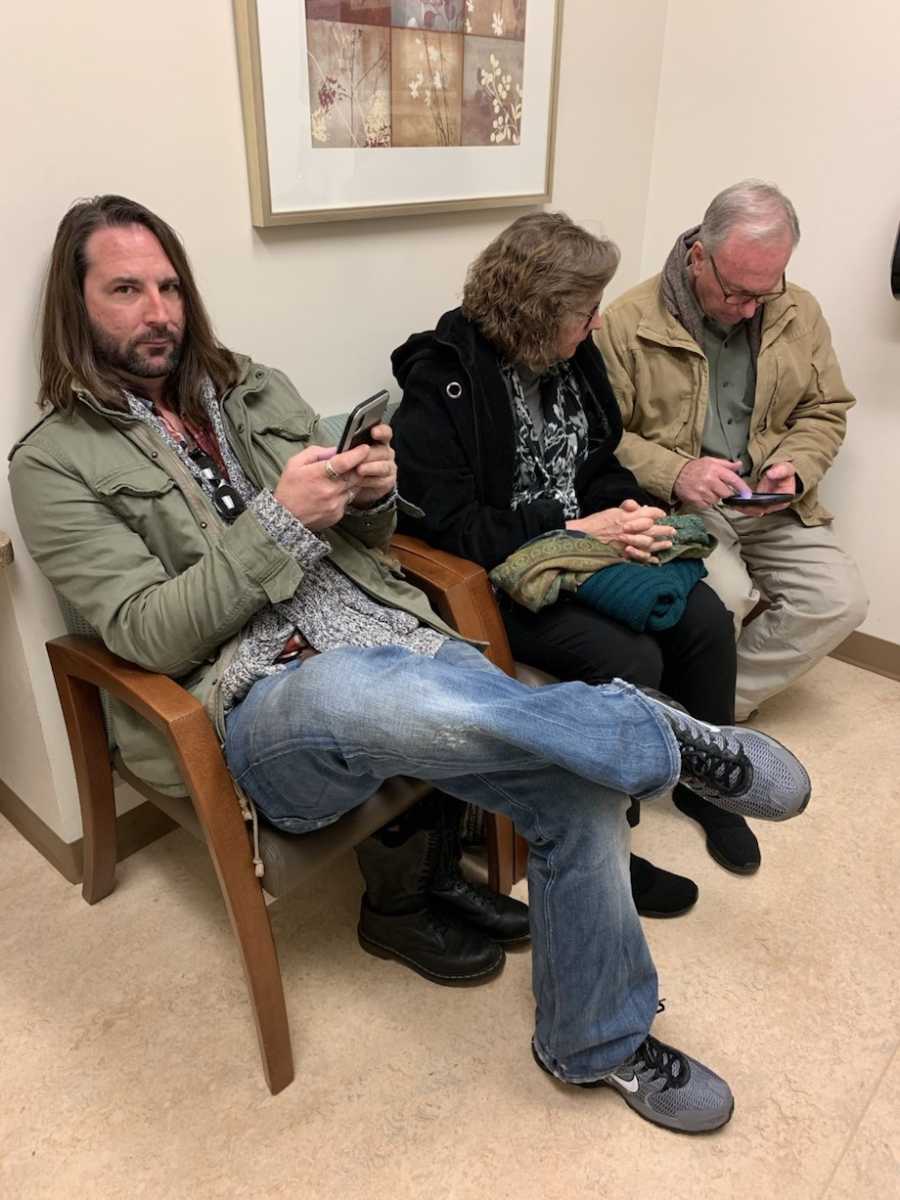
For the last couple of years, I’ve been sharing my story on social media. I want to advocate for those with chronic illnesses and make sure they get assistance with mental healthcare. I also talk about adults with congenital heart defects. It is assumed by insurance companies once we turn 18, we are somehow ‘cured.’ This is not true. CHD patients need lifetime care and assistance, and there is no cure. Keep on fighting, warriors, and keep on advocating for yourselves and others.”

This story was submitted to Love What Matters by Amelia Blackwater from Southern California. You can follow their journey on Instagram, Facebook, and YouTube. Do you have a similar experience? We’d like to hear your important journey. Submit your own story here. Be sure to subscribe to our free email newsletter for our best stories, and YouTube for our best videos.
Read more stories like this:
Do you know someone who could benefit from this story? Please SHARE on Facebook or Twitter.

